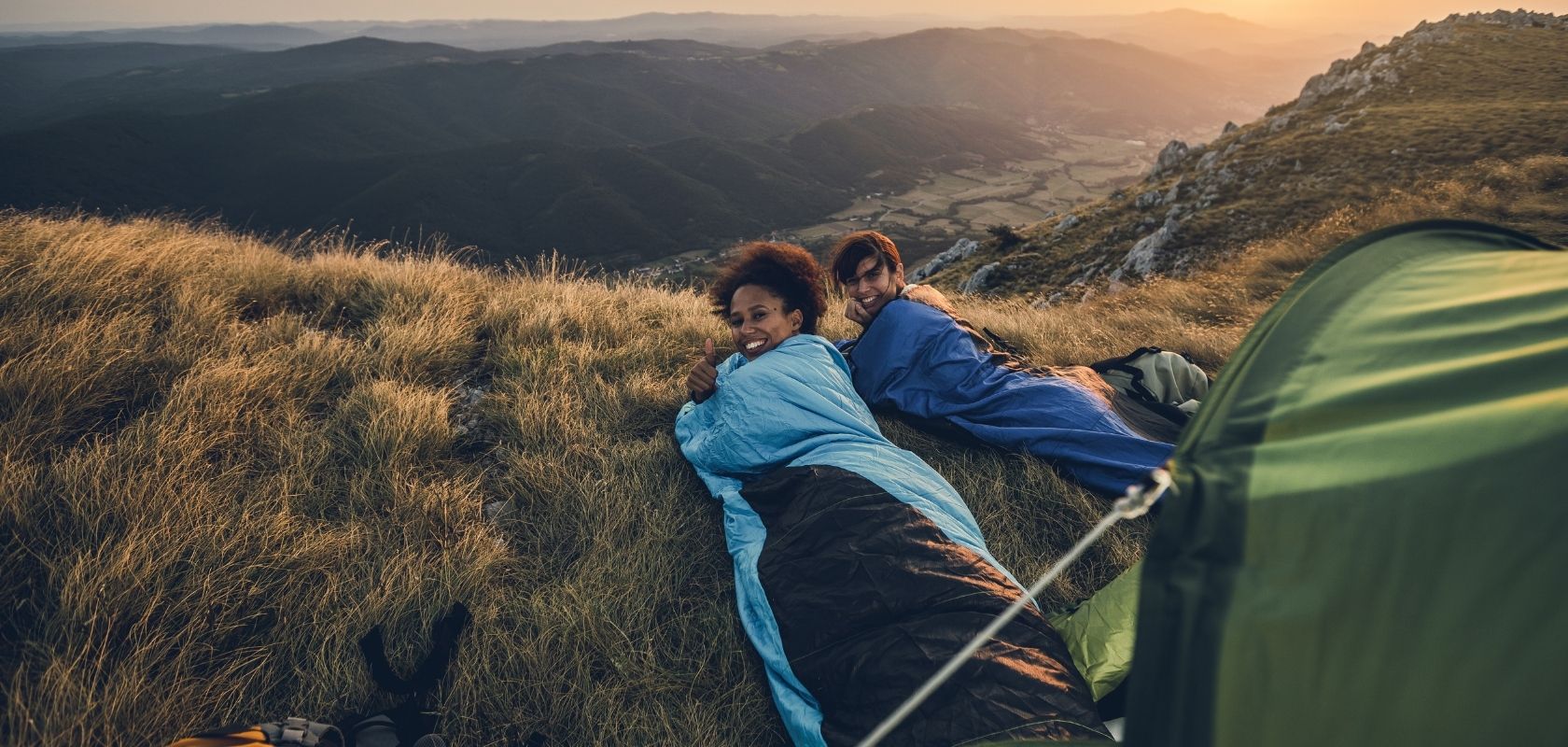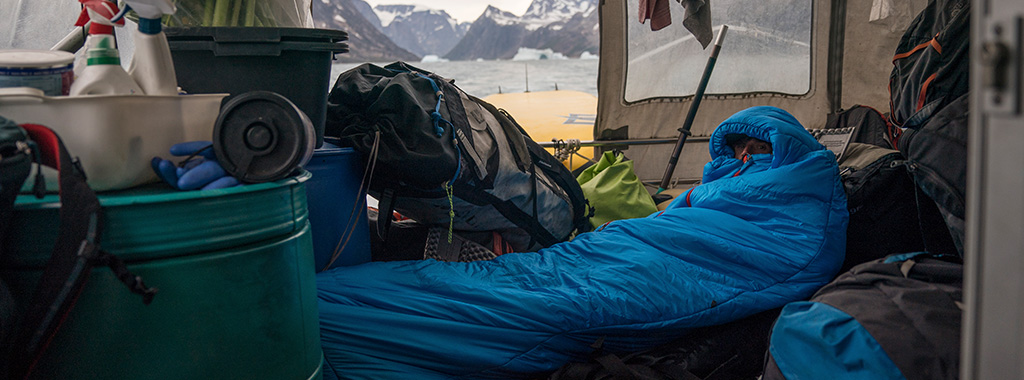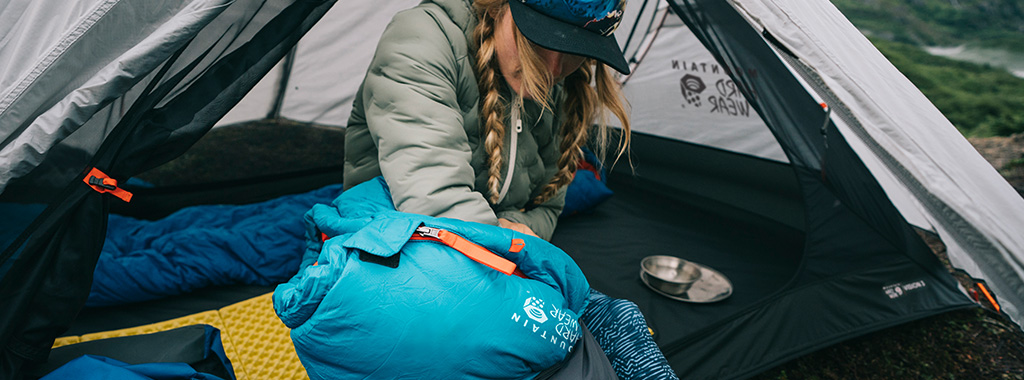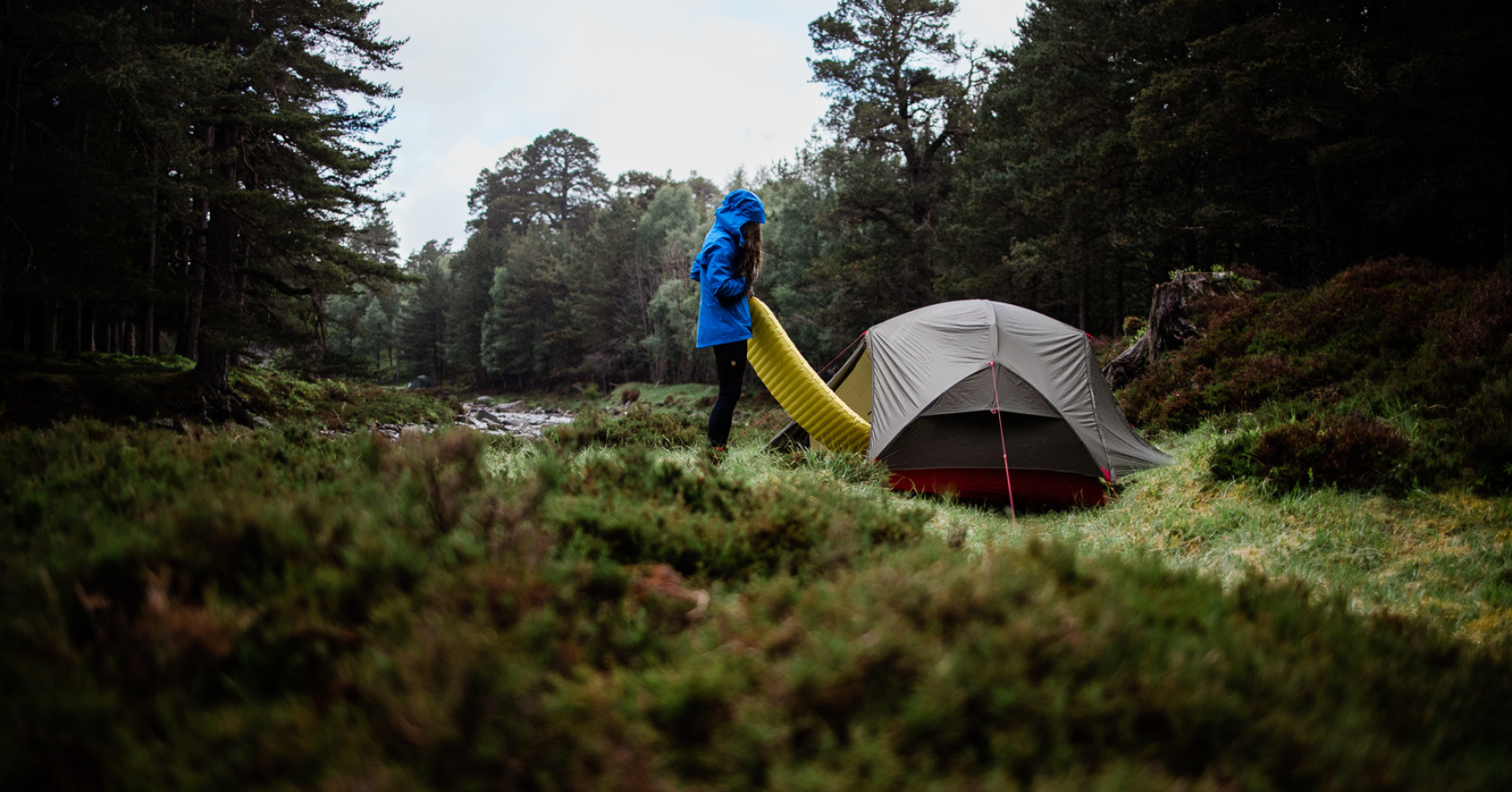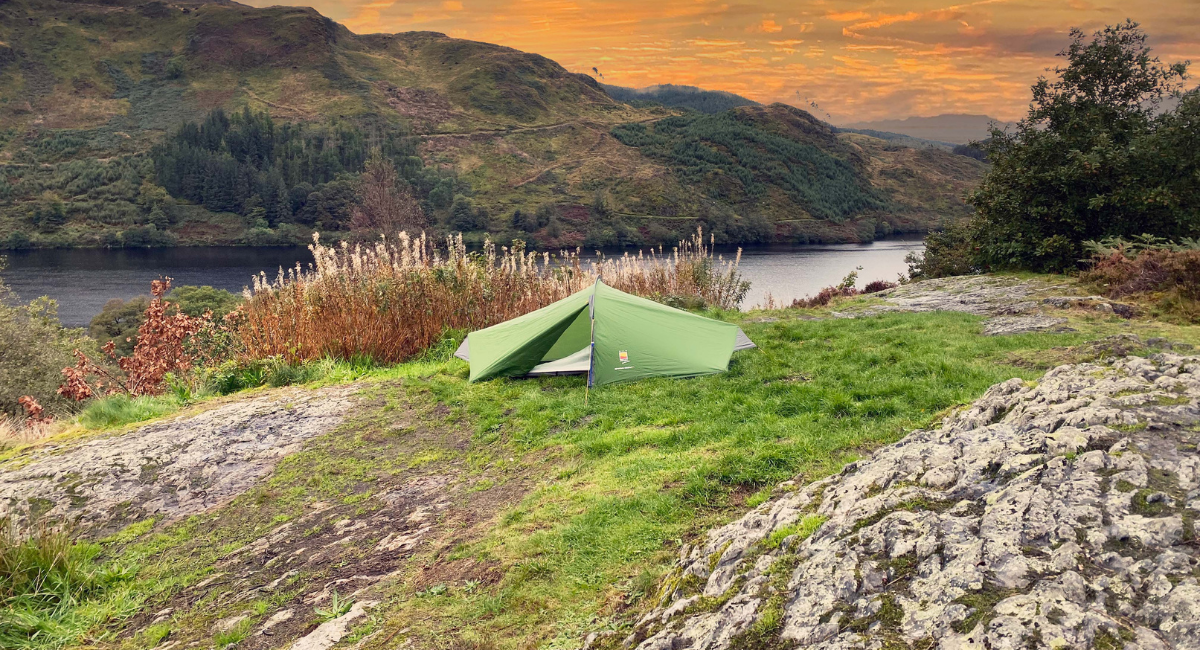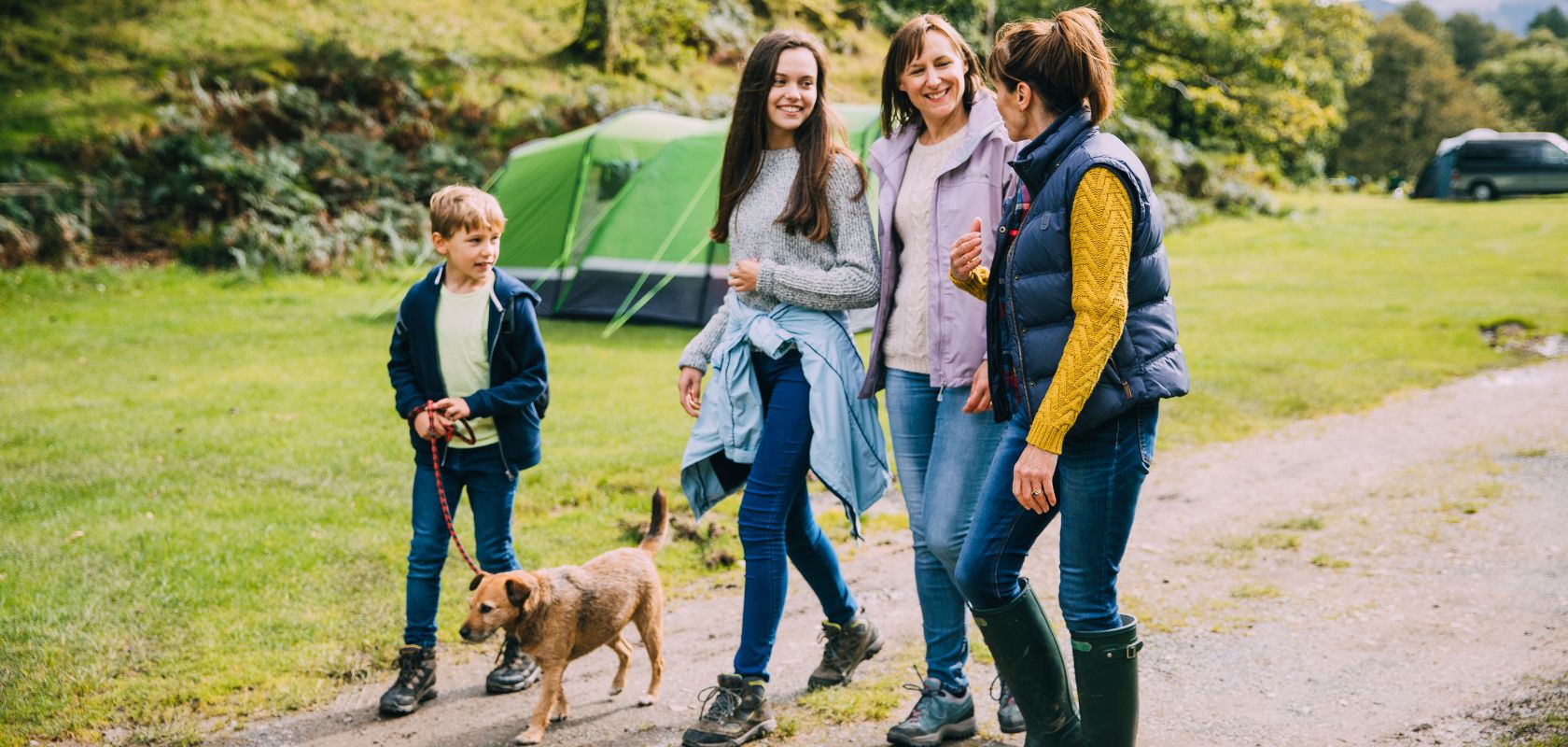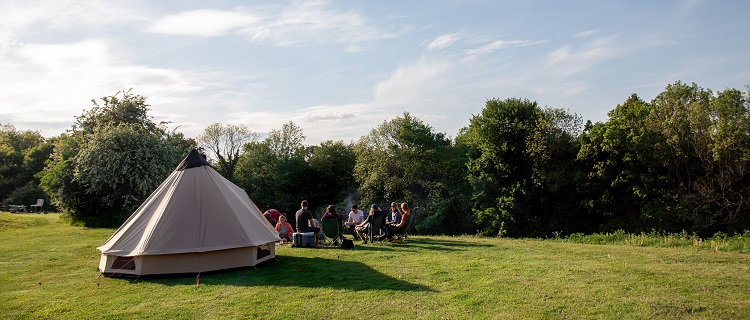Sleeping Bag Buying Guide
Your Guide To Buying The Best Sleeping Bag
The right sleeping bag should provide a cocoon of warmth and comfort, enabling your body to rest and recover, ready for tomorrow’s adventures. However, choosing which sleeping bag to buy can be overwhelming. So, whether you need a warm sleeping bag for a mountain expedition, can’t decide between down and synthetic, or you’re after a wide sleeping bag for a family camping trip, here’s our guide to help you get a great night’s sleep.
Where Will You Be Using Your Sleeping Bag?
When buying your sleeping bag, you need to think about where you are going, the temperatures you’ll experience, which sleeping bag rating you’ll need, and whether you’ll need to consider weight when carrying it for long periods. To help you decide there is something called the ‘warmth to weight ratio’, which looks at the effectiveness of the insulation and balances it against the weight.
For example, if a bag uses exceptionally high-quality down clusters, it will be very warm and very light. However, if a bag uses less expensive insulation, it can still be as warm, but it will need much more insulation to achieve the same temperature rating, meaning it will not be as light. In this instance, the two bags are as warm as each other, but the first has a much better warmth-to-weight ratio.
Why is this important? It all comes down to what you want from your bag. Those looking for something for family holidays or festivals won’t need to worry too much about the weight and pack size as you won’t be hiking for days and will likely have space in the back of a car. If, on the other hand, you are going backpacking or multi-day hiking, then weight becomes much more vital, as you’ll be carrying it all day.
Tip: Weight and bulk doesn't necessarily mean a warmer sleeping bag, as the quantity and quality of the insulation, as well as the design of the bag, may not be as effective as others.
What Is Warmth Rating?
When choosing your sleeping bag, there are many levels of insulation for you to choose from. Many manufacturers may refer to this as ‘season rating’ but at Cotswold Outdoor, we provide the ‘comfort limit’. This is the lowest temperature in which you should be able to have a comfortable, undisturbed, and safe night’s sleep.
At Cotswold Outdoor, we recommend buying a sleeping bag that offers a comfort limit slightly lower than the temperature you will be expecting to sleep in. This allows for a couple of degrees as insurance so you can sleep comfortably at the predicted outside temperature.
We use three temperature ratings to show you the comfort range for each sleeping bag. These are based on recommendations by the European Outdoor Group and are described as follows:
- Comfort - The temperature at which an adult female can have a comfortable night’s sleep.
- Limit - The lowest temperature at which an adult male can have a comfortable night’s sleep.
- Extreme - A survival rating for an adult female; after 8 hours, hypothermia may set in.
Tip: Everyone runs at a different temperature depending on how susceptible they are to the cold, caused by several factors including gender, age, and weight. If you know you feel the cold, opt for a sleeping bag rating that offers a little more warmth. It’s easier to cool down than it is to warm up!
Sleeping Bag Insulation Types
There are two main types of insulation in a sleeping bag: Down and Synthetic.
Down Sleeping Bags are considered to have a longer lifespan and often boast an excellent warmth-to-weight ratio, making them ideal when the lightest and smallest pack size is required. However, down can be expensive and does require a little more care. It should not be stored long-term in a small compression sack as this squashes the down clusters. Also, when on the hill or in your pack, it must be kept dry as water causes the down clusters to stick together, removing almost all their insulating properties.
Synthetic Sleeping Bags don’t require as much care as down bags; however, the warmth-to-weight ratio is not as good as down and they don’t pack away as small. However, synthetic sleeping bags do retain most of their insulating properties, even if they become wet, making them an incredibly durable and effective alternative. What’s more, as technology improves, their warmth and equivalent pack size is getting ever closer to that of down sleeping bags.
Tip: When travelling with young children, it’s usually worth using synthetic sleeping bags as synthetic bags can be washed and dried much more easily and quickly than down bags.
Sleeping Bag Shapes and Sizes
Sleeping bags come in all shapes and sizes, and for good reason. The less empty space you have in your sleeping bag, the more effective it will be at retaining heat and keeping you warm. However, there is a fine balance between having enough space for comfort and being warm enough for a good night’s sleep - so ensure you choose the right sleeping bag for you:
Mummy Sleeping Bags are tapered at the legs and the head, following the natural contours of the shoulders and hips.
Pros: They usually pack down small and have an excellent warmth-to-weight ratio making them ideal for backpacking trips where their excellent efficiency gains them popularity.
Cons: May feel restrictive once you’re zipped in.
Rectangular/Wide Sleeping Bags are squared at the bottom and top of the bag to aid comfort over performance.
Pros: They are usually a lot more versatile and able to be opened as a duvet or zipped with another bag to create a double wide sleeping bag. They also have a little more room. Excellent for caravan trips and house guests.
Cons: They can be bulky to pack down and their warmth to weight ratio is often quite low.
Double-Wide Sleeping Bags are twice as wide providing ample space for two people.
Pros: They can be highly versatile for families and can usually be converted into two separate bags or blankets. Perfect for couples on a family camping holiday.
Cons: They are usually bulky to pack and heavy with a low warmth-to-weight ratio.
Some brands offer sleeping bags designed specifically for women and children, as well as extra-long or extra-short bags to accommodate everyone.
There are also many different features in sleeping bags that can help increase your comfort. Some of the more common ones include:
Neck Baffles & Anti-Snag/Draft Tubes -
Great for reducing cold spots, particularly around the sleeping bag opening, zip, and around the shoulders. It can also help the zip run smoothly along the length of the bag so as not to damage the fabric. Drawcords at the shoulders and around the hood of the sleeping bag help to cinch in the opening and vastly reduce heat loss.
Contoured Footbox -
A Contoured footbox at the bottom of the sleeping bag can help to reduce empty space helping to keep your feet warm.
Stash Pockets -
Stash pockets are ideal for storing valuables and keeping them secure while you sleep.
Velcro Tabs -
Velcro tabsare often on more technical bags to cover the zip and stop the zip working its way open as you wriggle through the night.
Zip -
A zip might seem obvious but there are many different zip types: Zipped together, Left/Right-side zips, two-way zips, and longer zips.
Pillow Pockets -
Pillow pockets and integrated pillows are often featured on less technical bags where weight isn’t too much of an issue. These come in handy for keeping your pillow in the right place. Equally, if you don’t have a pillow, they’ll keep a few folded-up layers in place under your head.
Sleeping Mat -
Use a sleeping mat as a barrier between the cold ground, the sleeping bag, and you. Whether it’s a simple foam roll mat, a self-inflating mat, or a blow-up mattress, your night outdoors will be much more comfortable if you have something to sleep on. Check out our Sleeping Mat Guide for more information.
Some consider this a luxury, but - for many - it’s worth the few extra grams. If you like a firmer pillow, why not try an inflatable design? Compressible pillows that squish down into a stuff sack are more suited to those who like a soft pillow.
Tip: If you really want to shave the grams off your trip but don’t want to sacrifice your pillow, simply fold up a couple of dry layers and use those to rest your head.
A Sleeping Bag Liner will add warmth and protect the lining from body oils and dirt, prolonging the life of your sleeping bag. After all, it’s easier to clean a liner than a whole sleeping bag! They are available in fleece, cotton, and silk and offer variable degrees of warmth and comfort as well as considerably different pack sizes.
How To Care For Your Sleeping Bag
- If the compression sack supplied with your sleeping bag isn’t waterproof, swap it for a dry bag. That way, you don’t need to worry about a soggy night’s sleep.
- Using sleeping bag liners means your sleeping bag will stay cleaner for longer; it’s much easier and less time-consuming to clean a liner than the whole sleeping bag.
- Never store your sleeping bag on the outside of your rucksack. As one of your most important pieces of kit, it should be inside your pack.
- You should wash your sleeping bag according to the instructions on the label. If you are unsure how to do this correctly, speak to one of our in-store experts.
- If your sleeping bag is damaged or needs repairing, why not check out our Repair & Care service?
Shop All Sleeping Bags
To explore even more sleeping bags, why not check out our fantastic sleeping bag and camping collection?
Related articles

Let us know you agree to cookies
We use marketing, analytical and functional cookies as well as similar technologies to give you the best experience. Third parties, including social media platforms, often place tracking cookies on our site to show you personalised adverts outside of our website.
We store your cookie preferences for two years and you can edit your preferences via ‘manage cookies’ or through the cookie policy at the bottom of every page. For more information, please see our cookie policy.

